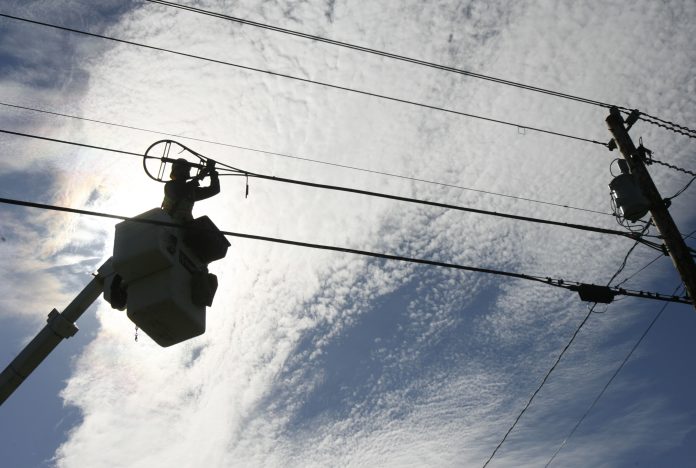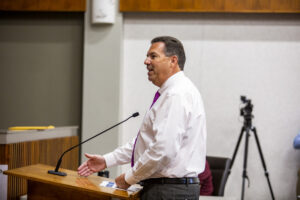
The Broadband Development Office Regional Working Group wants to find out about West Texans internet experience — if they have internet, how often people use it, what it’s used for, how the service is and its reliability.
Access to reliable, high-speed internet is a means of advancing education, training, employment opportunities, health care and delivery of essential services is critical to the future of Texas, Wilks said.
Ector County ISD Chief Technology Officer Kellie Wilks is part of the Broadband Development Office Regional Working Group. The BDO, which is administered by the Texas Comptroller of Public Accounts, will use the Digital Opportunity Plan: Public Survey to develop a Texas Digital Opportunity Plan, which is required to draw down federal funding for connecting Texans to reliable, high-speed internet.
“This work can’t be done without partners in the regions and the communities that need this service the most. This survey provides local knowledge which will help ensure the Texas Digital Opportunity Plan establishes a clear road map to bridge the digital divide and promote digital opportunities for all Texans,” Wilks said in an email.
Digital opportunity occurs when all Texas residents have the technology and knowledge needed to fully participate in a technology-reliant economy, by being able to readily access employment, education, health and essential services. Digital opportunity programs provide affordable and reliable internet, affordable devices and digital skills training to those most in need, she said.
She added that the survey takes about 10 minutes. BDO expects to complete the Texas Digital Opportunity Plan this fall.
“We do have access to paper copies. One of the things that we’ll do as a regional working group for … the BDO … is have an event so that we can … gather additional data. There’s not a hard stop on the survey. They opened it in April and they wanted it to run two months, but they developed these regional working groups because they didn’t have a lot of traction. One of the biggest barriers, or hardships, is the fact that we need people who don’t have internet to fill out the survey, so how do you get the message out,” Wilks said.
She added that the district sent the survey link out in a text message, which is hard to do if you don’t have a contact list. Wilks said they have put fliers in the Ector County Library’s computer lab area with the idea that people without internet access will see the flier and take the survey while they’re there.
Data gathered from this survey will be used to inform the Texas Digital Opportunity Plan, which will serve as a road map over the next five years for expanding the availability of affordable broadband and advancing digital opportunities for all Texans.
“We’re going to develop a broadband plan so that we can access federal funds to build out infrastructure,” Wilks said. She used the term “we” loosely because she was referring to a collective.
Internet service providers, or ISPs, can access the funding, but it’s based on availability and digital opportunity, she added.
“In the state of Texas, if you qualify for funding, like the BOOT grant, bringing online opportunities to Texas, they’re reviewing those. Multiple internet service providers applied for that funding to build out infrastructure and fiber to areas that don’t have connectivity. I think we’re supposed to find out in August or September who got that funding and what areas they will build out internet connectivity to,” Wilks said.
Building out the network is just the first step. Then you have to make sure internet service is available on those networks and is it affordable. Wilks said all those things are going to factor into a statewide plan to say everyone in Texas has the ability to connect.
Some very rural areas may have to use internet from SpaceX because companies may not be able to build fiber out to a house 20 miles outside of town.
“But really the focus is immediate areas within a city and adjacent to a city or town. It’s really just about getting a plan together, understanding who’s connected, and what we call served and unserved. Are the areas West Odessa, South Odessa, North Odessa, are they served by an internet service provider and do they have the ability to connect to the internet via that service. And if they are, are there any barriers like quality of service, cost or even knowledge — do I know how to connect and stay connected,” Wilks said.
“West Texans may have unique barriers compared to Austin or Dallas or Houston and even other places like Big Spring or Menard, the smaller communities. That’s what the digital opportunity survey is for is to get the vantage points of people in our area,” Wilks said.

Wilks, ECISD Superintendent Scott Muri and others have made presentations to government entities asking them to chip in to get funding for broadband development, but it didn’t bear much fruit.
She noted that the entities support broadband, but they don’t necessarily want to fund it or be in the broadband business.
“We just kind of hit a lull because of the federal funding. That was ARPA (American Rescue Plan Act) money that we were … trying to target to … expand the broadband efforts. Our county and city had other priorities for that money … They see broadband as important, but not necessarily a priority. New leadership in both, we had to take a step back. We’ll see what the state does in order to accommodate funding for these different networks that need to be built out in … Texas,” Wilks said.



